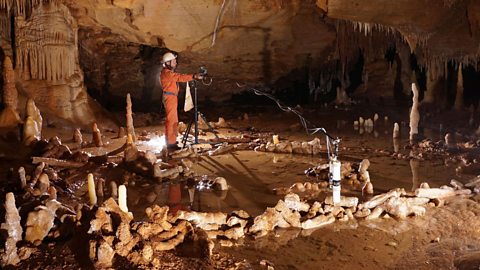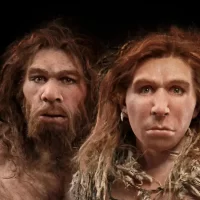In the heart of Romania’s breathtaking Carpathian Mountains lies a treasure trove of archaeological wonders.
Among these remarkable findings, one discovery stands out as a testament to our shared human history: the oldest Neanderthal skeleton found in Romania.
This ancient relic offers a captivating glimpse into the lives of our distant relatives and sheds light on our complex evolutionary journey.

The Discovery
In 2002, deep within the Apuseni Mountains of western Romania, a team of dedicated archaeologists made a groundbreaking discovery.
They stumbled upon the remains of a Neanderthal individual, whose age has since earned it the title of the oldest Neanderthal skeleton in Romania.
Radiocarbon dating has placed this ancient hominin at approximately 37,000 years old, a significant find that has ignited the imaginations of scientists and history enthusiasts alike.
The Importance of the Find

- A Window into Neanderthal Life: The discovery of this Neanderthal skeleton offers an invaluable opportunity to explore the lifestyle and habits of our ancient relatives. By analyzing the remains, scientists have gained insights into the physical characteristics, dietary preferences, and perhaps even social behaviors of these prehistoric beings.
- Human Evolutionary Puzzle: Neanderthals are our closest extinct relatives, and understanding their history is crucial to piecing together the puzzle of human evolution. Romania’s oldest Neanderthal provides a unique piece of this puzzle, allowing scientists to refine their understanding of when and how Neanderthals lived in different regions.
- Evidence of Neanderthal Migration: The location of this discovery is particularly significant. Romania’s Carpathian Mountains are distant from the well-known Neanderthal heartlands of Western Europe, suggesting that these ancient humans were more adaptable and mobile than previously thought. The find raises questions about the extent of Neanderthal migration and their ability to thrive in diverse environments.
Scientific Insights
The excavation of the oldest Neanderthal skeleton in Romania has yielded valuable scientific insights. Here are some key findings:

- Robust Anatomy: The skeletal remains display the robust physical characteristics typical of Neanderthals. These adaptations, such as a stocky build and powerful muscles, were well-suited for surviving in challenging environments.
- Dental Analysis: The examination of the teeth revealed important information about the individual’s diet and health. Isotopic analysis of tooth enamel suggested a diet primarily composed of meat, highlighting the Neanderthal’s status as a skilled hunter.
- Environmental Clues: The location of the discovery within the Carpathian Mountains indicates that Neanderthals were not confined to specific regions but could thrive in various landscapes. This finding challenges previous assumptions about Neanderthal distribution.
- Timeline of Human History: Radiocarbon dating placed the skeleton at around 37,000 years old. This date is significant because it overlaps with the presence of early modern humans in Europe, raising questions about potential interactions between these two groups.
History changing?
The oldest Neanderthal skeleton found in Romania’s mountains offers a captivating window into our shared human history.
It provides a remarkable opportunity to better understand the lives of our ancient relatives and the complex tapestry of human evolution.
As scientists continue to analyze this invaluable find, we can look forward to uncovering more secrets about the Neanderthals and the fascinating story of our own species.
Romania’s Carpathian Mountains have proven once again to be a rich source of archaeological treasures, connecting us to our distant past in ways we could never have imagined.























